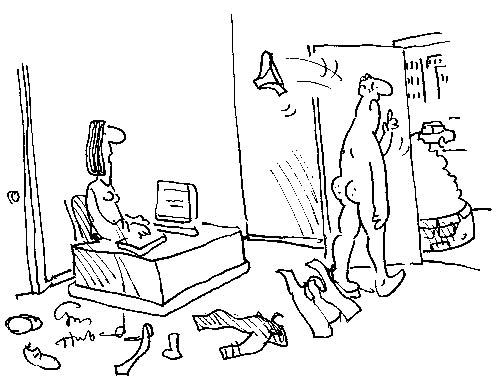Former champion jockey Bob Davies once walked into the paddock and asked the trainer of the horse he was about to ride over three miles and 24 stiff fences, ‘Does he jump?’ Back came the reply: ‘That’s what you’re here to find out.’
‘When they say that to you,’ Mick Fitzgerald told me on Sunday, ‘then you know you are in trouble.’ We were talking at a Cheltenham Literary Festival lunch to promote his new book, The Cheltenham World of Jump Racing (Racing Post, £25), and with the jump season proper starting at Cheltenham this weekend there could not have been a better time to hear the views of a man who rode that undulating course as well as anyone has ever done.
Former champion jockey Bob Davies once walked into the paddock and asked the trainer of the horse he was about to ride over three miles and 24 stiff fences, ‘Does he jump?’ Back came the reply: ‘That’s what you’re here to find out.’
‘When they say that to you,’ Mick Fitzgerald told me on Sunday, ‘then you know you are in trouble.’ We were talking at a Cheltenham Literary Festival lunch to promote his new book, The Cheltenham World of Jump Racing (Racing Post, £25), and with the jump season proper starting at Cheltenham this weekend there could not have been a better time to hear the views of a man who rode that undulating course as well as anyone has ever done.
Researching a book on the history of the Cheltenham Festival — the racing one, that is — I have been struck by the differing views on how that should be done. Conor O’Dwyer, who rode both Imperial Call and War of Attrition to victory in the Gold Cup, stuck middle to outer in the field, in the belief that everything happens so fast at the Festival that if you are on the inside you can be brought down or impeded. On the outer you may go further but should be able to maintain momentum.
Mick pointed to the example of former champion Richard Dunwoody: ‘When he rode anywhere else it was as if his inside leg had a hook on it that ran along the inside rail. But when it got to Cheltenham you would predominantly find Woody on the middle to outer because he had that worry about horses coming back to you once they haven’t been good enough up front or there were traffic problems.’
On the other hand, said Mick, Charlie Swan, who was eight times champion in Ireland, very rarely left the rails, usually reckoning he was riding the best horse in the race. ‘In the end it depends on the horse…if you are riding a horse with a lot of speed, tactically you can go where you want. Inside or outside, you will get the breaks. If you have to think about going into a gap at Cheltenham the gap has closed and you are too late.’
He has produced a sumptuous book with the aid of Sean Magee. The action photographs are superb. You simply won’t see greater athleticism than the shot of Binocular jumping the last in the 2010 Champion Hurdle nor a more heartwarming sight than Denman and Kauto Star enjoying themselves together on their summer holiday. And there are weighing-room insights of the kind you would expect from the most articulate jockey we have enjoyed in decades, most with rather more elegance than the description he quotes from Jonjo O’Neill’s Gold Cup win on Dawn Run: ‘We went to the first like shit off a shovel.’
Recently, I had the privilege of Jonjo talking me again through that 1986 race. Since Mick says in his book that he recalls every stride from See More Business’s Gold Cup victory in 1999, I asked him to do so for our Cheltenham audience. Here is the concluding section: ‘He’d made jumping mistakes in the past but he jumped beautifully at Cheltenham that day. You almost pinch yourself when you’re in a race like that and you think, “I’ve actually got a chance of winning.” When I jumped the fourth last — it’s quite a tricky fence — I landed over it and suddenly I had a lot of horse underneath me. You think, “This could be it.”
‘I had several horses with me. Florida Pearl was there and Simply Dashing and Go Ballistic. Florida Pearl was a short-priced favourite and I remember looking at Woody [Richard Dunwoody] and thinking, “He’s not actually running away.” It looked to me like Woody would have liked to be sitting stiller and have a little more up his sleeve. When Florida Pearl landed over the second-last I saw Woody give him a little squeeze. Nothing happened, and it was almost like a rush of blood to the head. I thought, “We’ve got him.” Go Ballistic was in front of me and I had ridden him the two races he had won. I thought, “I will be very disappointed if I can’t get past him. He’s an OK horse but he shouldn’t be good enough to hold See More Business going up the hill.” At both the last two fences I didn’t really see a stride but luckily for me he answered my call. I will never forget it when I went past that line. That moment belonged to me. It’s a great feeling. For that minute you own the place. For that minute it’s yours. It doesn’t matter how many years have gone, it feels like yesterday. They’ll never be able to take that little moment of magic away from me.’
You won’t get a better picture of a jockey’s mid-race thought process, nor a better evocation of what it feels like to be a Festival winner.
Robin Oakley’s Frankincense and More: The Biography of Barry Hills is published by Racing Post.






Comments